 NRx is UHN's monthly research e-newsletter. Every year, the December issue of NRx is dedicated to highlighting the year's research achievements of UHN's five research institutes: Krembil Research Institute (Krembil), the Princess Margaret (PM) Cancer Centre, the Techna Institute (Techna), the Toronto General Research Institute (TGRI) and the Toronto Rehabilitation Institute (TRI).
NRx is UHN's monthly research e-newsletter. Every year, the December issue of NRx is dedicated to highlighting the year's research achievements of UHN's five research institutes: Krembil Research Institute (Krembil), the Princess Margaret (PM) Cancer Centre, the Techna Institute (Techna), the Toronto General Research Institute (TGRI) and the Toronto Rehabilitation Institute (TRI).
In this issue you can read about:
-
DISCOVERY—UHN researchers developed new treatment strategies for cancer and found ways to apply machine learning to benefit the delivery of care; they also continued to reveal novel insights into the mechanisms underlying cancer, diabetes, autoimmune disease, vision disorders and heart disease.
-
SUPPORT—New funding will enable UHN researchers to advance groundbreaking research in the fields of regenerative medicine, cardiovascular disease, cancer, diabetes, neuroscience, transplantation and rehabilitation.
-
DISTINCTION—UHN scientists received international acknowledgment for their research achievements.
We hope you will find this newsletter informative and helpful. If you have feedback or questions, please contact www@uhnresearch.ca.
Happy holidays.
Christopher J. Paige, PhD, FCAHS
Executive Vice President, Science and Research
University Health Network
Heart Disease: Promoting Heart Health in Women

The World Health Organization reports that heart disease kills as many women as men, emphasizing the importance of promoting heart health in both genders.
Cardiac rehabilitation programs, which include exercise classes, counselling and education, have helped reduce heart disease–related mortality rates. Interestingly, women are less likely to enroll in these programs; also, women have not experienced as dramatic a reduction in mortality due to heart disease as men have. TRI Senior Scientist and TGRI Affiliate Scientist Dr. Sherry Grace led a study to explore the factors that influence women's preferences for such programs. She found that women preferred group classes at a centre over those in the home, and that they felt more comfortable in women-only programs but were often unable to attend due to limited scheduling options. This study highlights the need for more flexible cardiac rehabilitation programs to better accommodate women's needs and preferences. [Pubmed abstract]
Cancer: How Low Oxygen Levels Promote Tumour Growth
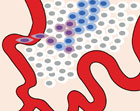
Cell hypoxia (blue) arises when tumour cells (white) are without adequate access to the blood supply and is associated with the development of cancer stem cells (purple).
Hypoxic tumour cells—those that are deprived of oxygen—are resistant to radiation and chemotherapy, and are thus associated with cancer re-growth. It is thought that this occurs through promoting the development of cancer stem cells, which are capable of initiating tumour growth. A study led by PM Senior Scientist Dr. Bradly Wouters provides new insight into how these processes are connected. Using breast cancer patient samples and experimental models, the team found that hypoxic tumour cells shut off the production of a protein called DICER, which was associated with the development of stem cell properties. This study reveals new opportunities to develop therapeutics that target the previously unknown link between tumour oxygen level and cancer stem cell development. [Pubmed abstract]
Osteoarthritis: Eating Away at the Joint
Osteoarthritis is characterized by the destruction of joint cartilage, the tough elastic material that protects the ends of bones. This is caused by inflammation, which can lead to debilitating joint stiffness and swelling. How this occurs in osteoarthritis is not fully known; however, a study led by Krembil Scientist Dr. Mohit Kapoor revealed that PPARγ—a protein involved in inflammation and joint destruction—is critical to keep the disease under control. This study suggests that therapeutics capable of promoting PPARγ function may be effective for osteoarthritis. These anti-inflammatory drugs, known as PPARγ agonists, are already approved for treating diseases like diabetes and may therefore be an accessible option for people with osteoarthritis. [Pubmed abstract]
Heart Disease: Harmful Effects of Intense Exercise

Endurance athletes are at risk for atrial fibrillation even though they do not suffer from traditional risk factors of the disease such as obesity or high blood pressure. Photo by Raniel Diaz (Flickr).
Regular physical exercise is beneficial to our well-being. However, high intensity endurance exercise can have a negative impact on heart health by increasing susceptibility to atrial fibrillation—a condition that is associated with irregular heartbeats, palpitations and shortness of breath. A study by TGRI Senior Scientist Dr. Peter Backx has shed light on how intense exercise exerts this effect. The study showed that highly intense exercise led to structural changes in the upper chambers of the heart. These changes involved the formation of excess connective tissue and an increased number of inflammatory cells, both of which were associated with increased vulnerability to atrial fibrillation. The study suggests that inhibiting inflammation could minimize the harm caused to the heart by intense exercise. [Pubmed abstract]
Stroke: Detailed Feedback Speeds up Recovery
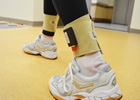
Accelerometers worn on the ankles can provide information about daily walking activity.
Personalized feedback within rehabilitation programs is important for achieving goals because it enables people to adjust their behaviours, gauge their progress and stay motivated. For those recovering from a stroke, the most common goal is to improve walking ability. TRI Scientist Dr. Avril Mansfield tested whether using a motion sensing technology—known as an accelerometer—could enhance rehabilitation programs for those recovering from a stroke. After wearing accelerometers while they were enrolled in the program, study participants received daily walking activity reports summarizing the information recorded by the device. The team found that the patients' overall walking improved when they received the added feedback. This type of personalized feedback may enhance rehabilitation in those recovering from a stroke. [Pubmed abstract]
Turning Genes On or Off: Bringing Loops into the Fold

How DNA is folded influences which genes are turned on—a process akin to origami where different folding gives rise to different objects.
A heart cell functions differently than a bone cell or a cancerous cell, yet inside each is an identical set of DNA arranged into genes. What makes them different is the unique profile of genes that are turned on. Little is known about how the three-dimensional organization of DNA affects this process, but PM Cancer Centre Senior Scientist Dr. Mathieu Lupien has found a protein called ZNF143 that provides new insight on the process. He found that ZNF143 bridges a physical connection between a specific gene and a distant regulatory element, creating a three-dimensional loop structure that turns the gene on. Because ZNF143 associates with different genes in different cells, it provides different folding instructions to the DNA. This turns on the profile of genes that helps cells perform their unique functions. [Pubmed abstract]
Lupus: Blood Molecule a Bad Influence on Immune Cells
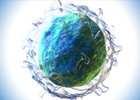
The B cell (illustrated above) is an important part of the immune system, but can target the body's own tissues in diseases like lupus.
In the immune system, B cells target invading microbes. In the autoimmune disease lupus, B cells behave differently: they signal the immune system to attack healthy tissues. To investigate why this happens, Krembil Senior Scientist Dr. Joan Wither placed B cells from healthy donors into blood that was isolated from someone with lupus. This caused the formerly healthy cells to behave just like those in lupus. The abnormal B cell behaviour was dependent on a molecule in the blood called IFN-α. The identification of this molecule as a key player in lupus represents an important first step towards the development of new therapies to restore normal B cell function. [Pubmed abstract]. Image courtesy of Blausen gallery 2014. Wikiversity Journal of Medicine. DOI:10.15347/wjm/2014.010
Cancer: New Biomarker for Acute Myeloid Leukemia
Acute myeloid leukemia (AML) is a blood cancer that interferes with the production of normal blood cells. Complete remission can be achieved with treatment, but there is still a significant population of AML patients for which this does not occur; as such, there is a need to identify better predictors of therapy response and outcomes. PM Cancer Centre Affiliate Scientist Dr. Leonardo Salmena and his team found that AML patients with high levels of expression of the INPP4B gene—which codes for an enzyme involved in cancer development—had poor response to initial chemotherapy and shorter overall survival. Using INPP4B expression levels could be a robust new biomarker for AML and may be a promising target for future AML therapies. [Pubmed abstract]
Diabetes: Therapeutics Activate Gut Nervous System
Diabetes is characterized by elevated blood sugar levels, due in part to increased sugar production in the liver. Drugs that interfere with this process are therefore promising treatments. Two such compounds are metformin (the most widely prescribed drug for type 2 diabetes) and resveratrol (an antioxidant found in red wine); however, it is not clear exactly how these compounds work. In two studies published back-to-back, TGRI Senior Scientist Dr. Tony Lam and his team found that the compounds activate sensing molecules in the gut. The activated molecules trigger the gut nervous system to relay signals to the liver via a neuronal network to stop producing sugars. Knowing how these organs interact will inform the development of drugs that target this process. [Pubmed abstract 1] [Pubmed abstract 2]
Pain Management: Seeing How the Brain Responds

Trigeminal neuralgia causes excruciating shock-like facial pain that can happen multiple times per day.
People with trigeminal neuralgia (TN) experience intense facial pain. Neurosurgery provides some relief; however, the effects of these procedures on the brain are poorly understood, making it difficult to understand the mechanisms that underlie the response to treatment. To address this, Krembil researchers Drs. Mojgan Hodaie and Karen Davis used advanced imaging techniques to visualize the brains of TN patients. They found that TN patients had abnormalities in the gray matter of the brain. These abnormalities were reversed following surgery, and this was correlated to the level of pain relief that patients experienced. This is the first study to show that these imaging techniques can be used to measure the effectiveness of neurosurgical pain treatments. This new approach moves us one step further towards the creation of customized treatment plans for TN patients. [Pubmed abstract]
Cancer: Artificial Intelligence and Radiotherapy
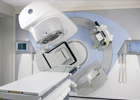
High-precision dosages of radiation provided by an IMRT machine (pictured) match the three-dimensional shape of a tumour and reduce treatment side effects.
To administer radiation therapy, specialists create a treatment plan that targets the tumour and spares healthy tissue. When tumours are located close to vital organs, intensity modulated radiotherapy (IMRT) is used. For IMRT, the size and intensity of multiple beams of radiation are varied to better target the tumour. Treatment plans using IMRT can take up to several hours to create. Dr. Thomas Purdie (PM Cancer Centre Clinical Researcher and Techna Affiliated Faculty) devised a solution to this problem. Using the latest advancements in machine learning, Dr. Purdie's team created a model to predict angles for radiation beams. The beam selection process only took a few minutes to complete, and over 90% of the plans created were deemed clinically acceptable by three experts. This method could help conserve human resources while ensuring treatment consistency. [Pubmed abstract]
Breast Cancer: Improving Current Treatment Plans
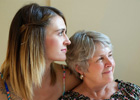
The least aggressive breast cancer subtype (luminal A) occurs in women of all ages, but is more prevalent in older women.
Radiation therapy is of overall benefit for women after breast conserving surgery; however, the degree of benefit can depend on various factors. This has led to the idea that, for some women, radiation therapy may be unnecessary. To explore this idea, PM Senior Scientist Dr. Fei-Fei Liu and Clinician Researcher Dr. Anthony Fyles analyzed samples from women with breast cancer. Half of these women were treated with radiation therapy, while the other half were not. They found that women with the least aggressive subtype of breast cancer benefitted the least from radiation therapy. For women over the age of 60 with this cancer subtype, radiation therapy showed no benefit. These findings could lead to changes in clinical practice that would help minimize unnecessary treatment in women with breast cancer. [Pubmed abstract]
Cancer: Delivering Drugs with Liposomes
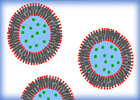
Liposomes are small bubbles, made of the same material as a cell membrane, that can encase and deliver drugs (green dots in the illustration above).
Liposomes are small laboratory-made particles that are being developed to deliver cancer drugs. Liposomes accumulate in tumours due to their size, but in practice their use has not led to meaningful improvements in shrinking tumours. Techna Director Dr. David Jaffray and colleagues have identified a possible explanation for this shortfall. While using liposomes increases the overall amount of drug inside a tumour, certain parts of the tumour may receive much less of the drug. The team used advanced imaging techniques to determine why this is the case, and found that tumour blood flow was a key factor in controlling liposome drug delivery. The development of quantitative imaging methods to determine tumour blood flow may enable physicians to identify patients that are more likely to benefit from liposome-based therapies. [Pubmed abstract]
Rehab: Automated Coach Helps Overcome Disabilities

Those with intellectual disabilities are often underemployed, which negatively impacts their quality of life.
Doing a job well and earning wages is a source of empowerment, especially for those with intellectual or developmental disabilities. This group of people has the lowest employment rate, and often requires assistance to complete certain tasks. TRI Senior Scientist Dr. Alex Mihailidis developed an automated system to help guide workers through a multi-step assembly task. The system—called N-CAPS—uses a camera and advanced analysis techniques to monitor the progress of the worker. When workers pause, or perform a step incorrectly, the system prompts them and provides instructions via an animated job coach. The system increased the ability of the study participants to perform tasks without the need for a human job coach. This type of technology could help workers with cognitive disabilities lead an active and independent life. [Pubmed abstract]
Kidney Disease: Predicting Who is at Risk
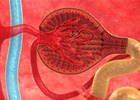
Malfunctioning of the kidney's filters (one is depicted above) is not typically accompanied by symptoms, making it difficult for doctors to assess.
The kidneys filter waste products from the blood into the urine. To help identify those that have kidneys with damaged or faulty filters, physicians measure proteins that leak into the urine—a phenomenon known as proteinuria. There is currently no consensus on how best to measure the degree of proteinuria. To address this issue, TGRI Scientist Dr. Heather Reich and Dr. Sean Barbour at the University of British Columbia assessed eight different ways of measuring proteinuria. They found that the best method to predict the long-term risk of kidney failure is to consider the most recent proteinuria measurement, rather than taking an average of multiple measurements or correcting the measurements for body size, as is sometimes done. Widespread adoption of this method could serve to better diagnose and monitor patients with kidney disease. [Pubmed abstract]
Surgery: Seeing Tumours More Accurately
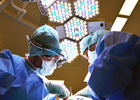
Bringing more advanced imaging techniques into the operating room may help surgeons safely remove tumours located in difficult to reach places.
Advanced imaging techniques give surgeons more precise control when removing tumours. For example, x-ray computed tomography is used to construct a three-dimensional image to plan the optimal surgical strategy, and fluorescence optical imaging is used to surgically remove cancer that has spread to the lymph nodes. Until now, using both techniques together has been limited because the imaging agents needed by each are not compatible. Techna Scientist Dr. Jinzi Zheng has found a way to overcome this limitation by developing a single injectable imaging agent that can be used for both techniques. Using various experimental cancer models, the team showed that the new agent improved sensitivity when mapping the location of the tumour. This new agent could improve the localization, detection and removal of a wide range of cancers. [Pubmed abstract]
Cancer: New Treatment Strategy
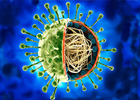
Viruses are microscopic organisms that infect cells. They activate cell pathways that trigger an immune response to eliminate the invading organisms.
Colorectal cancer recurs in approximately 50% of people being treated for the disease. This may be caused by a subset of cancer cells known as cancer stem cells, which are resistant to treatment and can multiply indefinitely. A team of researchers led by PM Cancer Centre Scientist Dr. Daniel De Carvalho has discovered a new therapeutic strategy that is effective against colorectal cancer stem cells. Treating colorectal cancer cells with the chemotherapy drug decitabine makes the cells grow and divide more slowly, and behave like they are infected with viruses. Through mimicking a viral infection, the immune system is tricked into seeing the cancer cells as an infection that needs to be destroyed. This strategy could lead to more effective treatments that prevent colorectal cancer recurrence. [Pubmed abstract]
Cardiology: What Makes a Good Heart?
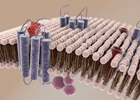
Cell membrane proteins (blue) are difficult to detect because they are often damaged after being extracted from the lipid membrane.
During each heartbeat, electrical signals instruct heart muscle cells to contract. Proteins between neighbouring cells allow the electrical signals to pass between them, leading to concerted contractions. These proteins are difficult to study because they are difficult to purify from the cell's membrane. Anthony Gramolini and PM Cancer Centre Senior Scientist Thomas Kislinger have overcome this challenge. By refining an existing protein purification method, the researchers isolated over 500 cell membrane proteins from human heart cells. Of these, they identified Tmem65 as a regulator of human heart development and function; electrical signals in the heart are disrupted in the absence of Tmem65. These findings provide new insight into cardiac diseases such as arrhythmias, which occur when channels that conduct electrical signals do not function properly. [Pubmed abstract]
Vision Disorders: Connecting the Dots

Glaucoma, which affects more than 70 million people worldwide, may progress unnoticed until symptoms like tunnel vision (simulated above) occur.
Human eyes collect pictures that are sent to the brain through a cable called a retinal axon. Retinal axons can degenerate in conditions like glaucoma, eventually leading to irreversible blindness. Currently, it is unknown how developing retinal axons connect with the brain, which has limited the creation of new therapies. Krembil Senior Scientist Dr. Philippe Monnier has helped to shed light on this issue. His research team found that a group of peptides, known as RGMa, work in combination to help retinal axons target certain visual areas of the brain. They found that a balance of these peptides ensures that retinal axons connect with the appropriate area of the brain. These insights may help develop therapies aimed at restoring vision in patients with retinal axon damage. [Pubmed abstract]
Patient Safety: Identifying Weaknesses in the System
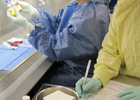
Health care professionals perform systematic checks of potentially hazardous medications (above) to ensure that patients receive the right dose.
Recently, new measures were established to prevent cancer patients from receiving the wrong dose of intravenous (IV) chemotherapy. However, safety issues for drugs that are administered through other means—for example, orally—were not addressed. Techna Affiliated Faculty Dr. Patricia Trbovich and Clinical Engineer Melissa Griffin initiated a study to compare safety checks for dispensing chemotherapy drugs that are given through these routes. They found that administration of IV chemotherapy involves a total of 57 systematic checks, while administration of oral chemotherapy—which poses many of the same toxicity risks—has only six systematic and independent checks. This study has revealed an enormous opportunity to improve patient safety, and Dr. Trbovich is working with Cancer Care Ontario to develop new guidelines for chemotherapy dispensing. [Pubmed abstract]
Alzheimer Disease: Speaking One's Mind

Alzheimer disease destroys the brain's structural and functional networks, which reduces brain cell activity and leads to symptoms such as dementia.
Alzheimer disease (AD) is usually diagnosed by looking for signs of memory loss or unexplained changes in behaviour. By the time these changes occur, however, brain tissue has already been irreversibly damaged. Thus, existing treatments only serve to lessen the symptoms rather than cure the disease. Because patients with AD often exhibit language deficiencies, TRI Scientist Dr. Frank Rudzicz explored whether analyzing speech could provide a way to diagnose AD at earlier stages. The research team used audio files from individuals with AD and healthy controls, and trained a computer to consider subtle linguistic differences between the groups. This classification system could accurately identify individuals with AD with over 81% accuracy. This system could be used to detect the early stages of AD when symptoms are not as obvious. [Pubmed abstract]
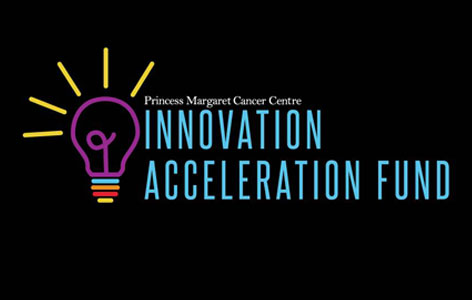
The Princess Margaret Cancer Foundation and UHN's Office of Technology Development and Commercialization have launched the first round of Innovation Acceleration Fund (IAF). The fund will support the advancement of PM Cancer Centre research towards commercialization and provides up to $250,000 per proposal.
The IAF was created to ensure that research is translated from the bench to the bedside. By providing substantial funding for Princess Margaret investigators, the IAF will help advance early-stage research to a point where its commercial applicability can be sufficiently demonstrated to third parties.
Eligible researchers and clinicians are encouraged to learn more on the IAF website; login information was provided individually to eligible applicants via email. For login access, questions and other queries, please contact Dr. Bharti Ranavaya (IAF Investment Manager & Business Development and Commercialization Lead for PM Cancer Centre).

UHN was named Canada's top-funded research hospital in RE$EARCH Infosource Inc.'s Top 40 Research Hospitals 2015. The annual study ranks research hospitals across Canada according to their research funding data. Funds that were considered included grants, contributions and contracts from all internal and external government and non-government sources. UHN earned its top position for reporting research expenditures over $303 million in the 2014 fiscal year, and this was the fifth year in a row that UHN topped the list.
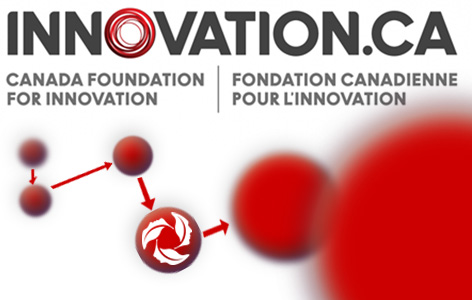
UHN was awarded $8.82 million to help build and enhance state-of-the-art facilities and capabilities from the Canada Foundation for Innovation's Innovation Fund program. The infrastructure to be developed through the funds will support research programs in regenerative medicine (Drs. Herbert Gaisano and Mark Cattral); cancer (Drs. David Jaffray and Benjamin Neel); transplantation (Dr. Shaf Keshavjee); and rehabilitation (Dr. Geoff Fernie).
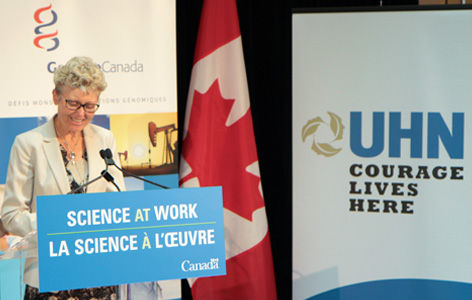 UHN researchers Drs. Suzanne Kamel-Reid (PM Cancer Centre, pictured on the left) and Shaf Keshavjee (TGRI Senior Scientist) were collectively awarded $12 million from Genome Canada and industry partners. The two successfully funded projects, which represent half of all awards granted nationally, will leverage cutting-edge genomic technologies to improve patient outcomes: Dr. Kamel-Reid will develop a national framework for the large-scale genomic analysis of tumours; and Dr. Keshavjee will develop a genomic-based test to better assess the suitability of donor lungs for transplantation.
UHN researchers Drs. Suzanne Kamel-Reid (PM Cancer Centre, pictured on the left) and Shaf Keshavjee (TGRI Senior Scientist) were collectively awarded $12 million from Genome Canada and industry partners. The two successfully funded projects, which represent half of all awards granted nationally, will leverage cutting-edge genomic technologies to improve patient outcomes: Dr. Kamel-Reid will develop a national framework for the large-scale genomic analysis of tumours; and Dr. Keshavjee will develop a genomic-based test to better assess the suitability of donor lungs for transplantation.
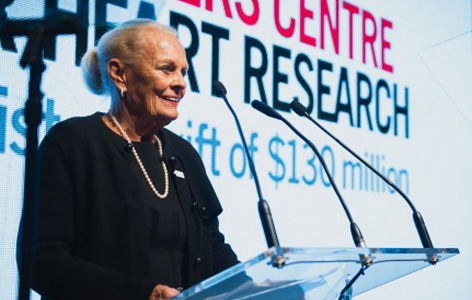 On behalf of the Rogers family, Loretta Rogers (pictured) gave a gift of $130 million—the largest private donation ever made to a Canadian health care initiative—to UHN, the University of Toronto and The Hospital for Sick Children to establish the Ted Rogers Centre for Heart Research late last year. The new Centre's goal is to improve heart health in children and adults by promoting innovation in cardiac medicine. To achieve this, it will bring together and promote collaboration among clinicians, researchers and engineers with expertise in genomic medicine, stem cell research, bioengineering and cardiovascular treatment and management at the three participating institutions.
On behalf of the Rogers family, Loretta Rogers (pictured) gave a gift of $130 million—the largest private donation ever made to a Canadian health care initiative—to UHN, the University of Toronto and The Hospital for Sick Children to establish the Ted Rogers Centre for Heart Research late last year. The new Centre's goal is to improve heart health in children and adults by promoting innovation in cardiac medicine. To achieve this, it will bring together and promote collaboration among clinicians, researchers and engineers with expertise in genomic medicine, stem cell research, bioengineering and cardiovascular treatment and management at the three participating institutions.
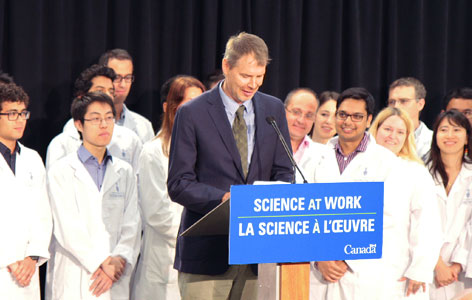 University of Toronto stem cell researchers—led by McEwen Centre Researcher Dr. Peter Zandstra (pictured)—were awarded $114 million under the inaugural Canada First Research Excellence Fund program (administered by the Canadian Institutes of Health Research). The initiative, titled Medicine by Design, is aimed at helping the researchers translate promising research discoveries into more effective therapies for patients in Canada and worldwide. The grant's three research pillars aim to create: safer and more effective stem cell-based therapies; complex tissues for research, drug discovery and replacement of damaged tissues; and organs that can be successfully transplanted into human patients.
University of Toronto stem cell researchers—led by McEwen Centre Researcher Dr. Peter Zandstra (pictured)—were awarded $114 million under the inaugural Canada First Research Excellence Fund program (administered by the Canadian Institutes of Health Research). The initiative, titled Medicine by Design, is aimed at helping the researchers translate promising research discoveries into more effective therapies for patients in Canada and worldwide. The grant's three research pillars aim to create: safer and more effective stem cell-based therapies; complex tissues for research, drug discovery and replacement of damaged tissues; and organs that can be successfully transplanted into human patients.
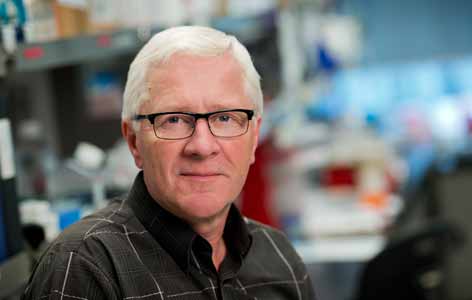 PM Cancer Centre Senior Scientist Dr. John Dick was awarded $6.2 million from the Terry Fox New Frontier Program. His research program will advance our understanding of cancer stemness, which is the ability of cancer cells to self-renew and generate more cancer cells. He will focus his work on uncovering ways to improve the detection of and treatment for three high-risk cancers: acute myeloid leukemia, myeloma and brain cancer.
PM Cancer Centre Senior Scientist Dr. John Dick was awarded $6.2 million from the Terry Fox New Frontier Program. His research program will advance our understanding of cancer stemness, which is the ability of cancer cells to self-renew and generate more cancer cells. He will focus his work on uncovering ways to improve the detection of and treatment for three high-risk cancers: acute myeloid leukemia, myeloma and brain cancer.

UHN is proud to announce the renewal of Canada Research Chairs for Drs. Elise Stanley (Tier 1 Chair in Molecular Brain Science) and Tony Lam (Tier 2 Chair in Obesity). Also, a new Tier 2 Chair was announced for Dr. Leonardo Salmena in the area of Signal Transduction and Gene Regulation in Cancer. Canada Research Chair holders are expected to improve our depth of knowledge and quality of life, strengthen Canada's international competitiveness, and help train the next generation of highly skilled people through supervision, teaching and collaboration.
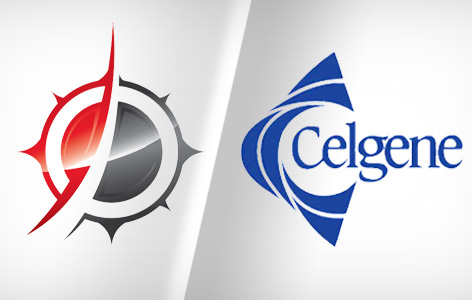
In one of the largest biotech deals in Canada, UHN and its partners launched Northern Biologics (pictured, logo on the left) in late 2014. The privately held company was borne from research at UHN and the University of Toronto to develop antibody-based therapeutics. This year, Northern Biologics entered into a strategic collaboration with Celgene Corp. (pictured, logo on the right), a multinational biopharmaceutical company. The deal includes a $30 million upfront cash payment to Northern Biologics, which will help fund the discovery and development of first-in-class therapeutic antibodies for oncology and fibrosis.
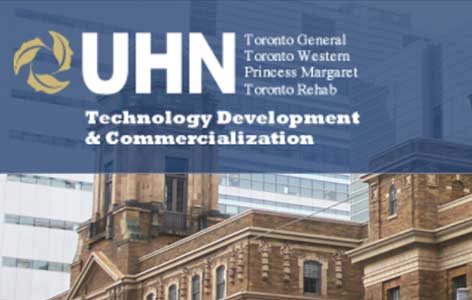 Four technologies—developed at PM and Techna and commercialized by UHN's Office of Technology Development and Commercialization—were launched this year:
Four technologies—developed at PM and Techna and commercialized by UHN's Office of Technology Development and Commercialization—were launched this year:
The Integral Quality Monitor (IQM) was invented at UHN and commercialized by the German start-up iRT. IQM enables radiation therapy specialists to monitor therapy while a patient is being treated and serves as a 'final check' while the radiation is administered to further improve safety.
A next-generation radiosurgery platform, known as the Leksell Gamma Knife® Icon™, was launched by Elekta—a leading multinational manufacturer of radiotherapy devices. The technology incorporates cone-beam CT image-guidance capabilities that were developed and prototyped at UHN.
AQUA is an end-to-end software platform for managing department-level quality assurance and scheduling, and is being commercialized by Acumyn. The platform will help improve workflows and safety in radiation therapy departments.
AMBOS, a new technology for the radiation therapy treatment planning process, was licensed to RaySearch Laboratories AB. The technology will help to standardize the setup of new linear accelerators (linacs), which are devices that generate beams of radiation for the treatment of cancer. This will help improve the accuracy with which radiation is delivered by these machines.
Research findings by two UHN scientists appeared on the list of the Top 10 Canadian Cancer Society-funded research of 2014. The studies were recognized by the Society for transforming our understanding of cancer.
 Dr. John Dick's article appeared in the journal Nature and described the role of the DNMT3A gene as an important indicator of the earliest stages of leukemia (a cancer of the blood). His research team found that blood cells carrying mutations in this gene were ancestors of cells that would eventually become leukemic. The presence of these cells may help identify people who are likely to develop disease and the findings offer a new treatment strategy by targeting pre-leukemic cells. Read more about Dr. Dick's study here.
Dr. John Dick's article appeared in the journal Nature and described the role of the DNMT3A gene as an important indicator of the earliest stages of leukemia (a cancer of the blood). His research team found that blood cells carrying mutations in this gene were ancestors of cells that would eventually become leukemic. The presence of these cells may help identify people who are likely to develop disease and the findings offer a new treatment strategy by targeting pre-leukemic cells. Read more about Dr. Dick's study here.
 The second study, led by Dr. Robert Bristow, revealed a new genetic test that is capable of predicting prostate cancer recurrence. The test will help identify people that require more aggressive treatments and avoid over-treating those who do not. The study was published in Lancet Oncology. Learn more about Dr. Bristow's research here.
The second study, led by Dr. Robert Bristow, revealed a new genetic test that is capable of predicting prostate cancer recurrence. The test will help identify people that require more aggressive treatments and avoid over-treating those who do not. The study was published in Lancet Oncology. Learn more about Dr. Bristow's research here.


 Dr.
Dr.  Dr.
Dr.  Dr.
Dr.  Dr.
Dr.  Dr.
Dr.  In honour of his outstanding achievements in radiation oncology, Dr.
In honour of his outstanding achievements in radiation oncology, Dr.  Dr.
Dr.  Dr.
Dr.  Dr.
Dr.  Dr.
Dr.  The United States Institute of Medicine (IOM) announced the election of 70 new members, including Dr.
The United States Institute of Medicine (IOM) announced the election of 70 new members, including Dr.  Dr.
Dr.  Dr.
Dr.  Dr.
Dr.  Dr.
Dr.  Dr.
Dr.  Dr.
Dr.  Dr.
Dr.  Dr. Jenny Heathcote, former Krembil Senior Scientist, was the recipient of the 2015 UHN Global Impact Award. The award annually recognizes one UHN staff that has changed the world of health and health care. Dr. Heathcote's research has provided key insights into the transmission of viral hepatitis and the underlying molecular pathways that govern treatment response in primary biliary cirrhosis.
Dr. Jenny Heathcote, former Krembil Senior Scientist, was the recipient of the 2015 UHN Global Impact Award. The award annually recognizes one UHN staff that has changed the world of health and health care. Dr. Heathcote's research has provided key insights into the transmission of viral hepatitis and the underlying molecular pathways that govern treatment response in primary biliary cirrhosis.